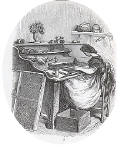A Brief History of Global Tobacco Use

This section of the website is intended for the historical and informational purposes of thinking adults. Anyone who has been raised since the turn of the 20th century already knows that tobacco can be addictive and lead to various forms of cancer. If you do not smoke, it would seem illogical to start. We, in no way, encourage people to use any form of tobacco product.
In his 1954 work, "The Gentle Art of Smoking", Alfred H. Dunhill was nostalgic for a past when smoking was an "art" and enjoyed as a pleasurable pastime in elegant smoking rooms. He remarked that the "furious tempo of modern life" had resulted in tobacco, in the form of ubiquitous cigarettes, being used as a narcotic to calm frayed nerves and becoming a habit and therefore no longer pleasurable. Common sense dictates that anything you do to your body in excess (a habit) is detrimental.
In his 1954 work, "The Gentle Art of Smoking", Alfred H. Dunhill was nostalgic for a past when smoking was an "art" and enjoyed as a pleasurable pastime in elegant smoking rooms. He remarked that the "furious tempo of modern life" had resulted in tobacco, in the form of ubiquitous cigarettes, being used as a narcotic to calm frayed nerves and becoming a habit and therefore no longer pleasurable. Common sense dictates that anything you do to your body in excess (a habit) is detrimental.
[ Home ] [ Cultivation, Harvest, Curing ] [ History ] [ Links ] [ Cigar Sizes ]
[ FAQ ] [ Glossary ] [ Click Here to Buy Tobacco Seed ]
[ FAQ ] [ Glossary ] [ Click Here to Buy Tobacco Seed ]
Tobacco is native to the Americas. The methods and purposes for use of the plant were as varied as the aboriginal cultures that used it. As Europeans began their exploration and expansion in the 16th and 17th centuries, tobacco use was rapidly adopted and integrated into their own cultures. Predominantly, the method that Europeans first encountered was how its use was popularized in their home countries.

The Spaniards were introduced to cigars by the natives of the Caribbean Islands and Central America and they still generally prefer Havanas. The French adopted snuff and the English, pipe smoking.
In the colonies, where a great deal of tobacco was cultivated, smoking (or drinking) of tobacco was done using pipes. The picture to the right shows a twist of sweet tobacco and the accoutrements necessary to make fire and smoke. Since it was considerable work to smoke (there were no matches), smoking was typically limited at times of leisure and celebration.
By the beginning of the 1800s and continuing through much of that century, the majority of Americans who used tobacco, chewed tobacco. On the frontier, even in areas where tobacco was not grown as a cash crop, folks grew patches for personal consumption. Their general form of curing was to adopt an ancient Indian practice of twisting tobacco leaves tightly together into rope about one foot long and back-braiding it onto itself into a form commonly referred to as a twist (see picture below).

Twists fit perfectly into pockets and pouches were it was easily accessible. Biting off a piece and holding it into the cheek formed a "chaw". Since this form of tobacco was portable and required no fire to use, it was rapidly adopted - especially among agrarian workers. Chewing or smokeless tobacco was safer to use around dry materials like hay and straw, was a salivant and kept mouths from parching during hard physical work, offered an instant antiseptic for cuts and scrapes, allowed both hands to be free for the task at hand, and since it is an appetite suppressant, made the long period from breakfast to dinner more tolerable.
As the 19th Century progressed into the 20th, chewing and smoking of pipes and cigars lost favor to the once looked upon as crude, cigarette. Since cigarettes were convenient and easy to use, tobacco use became habitual and therefore the issue of health as we know it today.
"Tobacco and Kentucky", 1975, W. F. Axton
"The Colonial Merchant: Sources and Readings", 1966, Stuart Bruchey
"Tidings from the 18th Century", 1993, Beth Gilgun, pgs. 224-229
"The Gentle Art of Smoking", Alfred H. Dunhill, 1954
